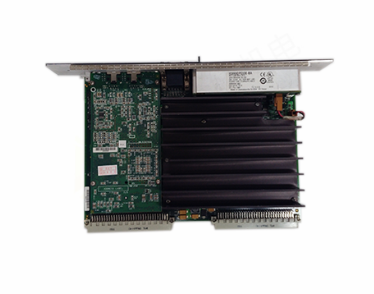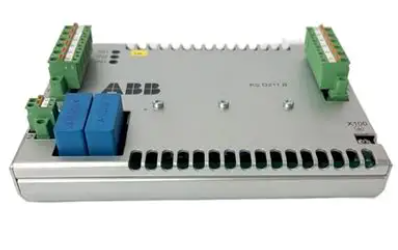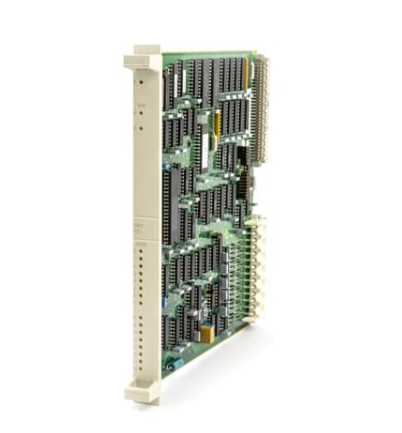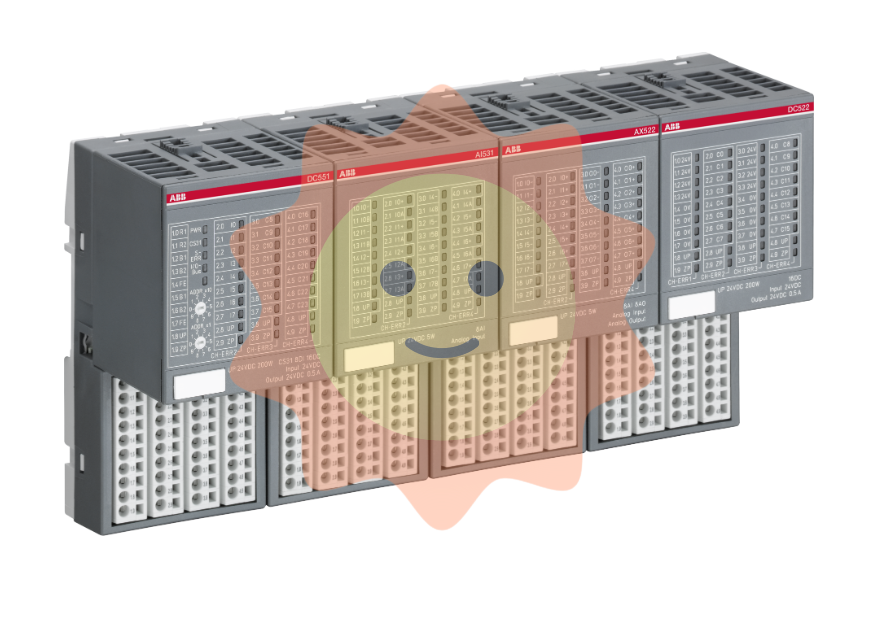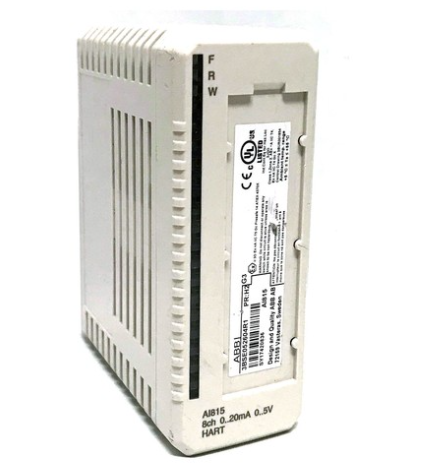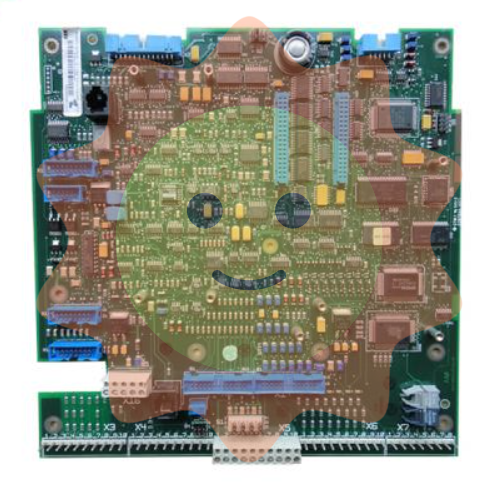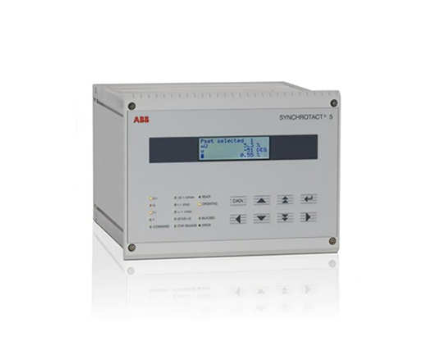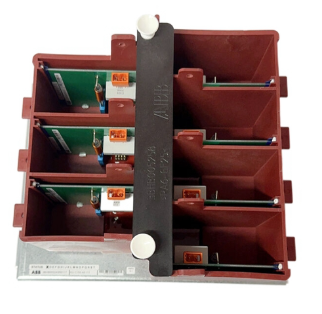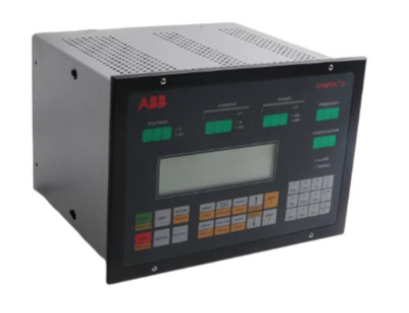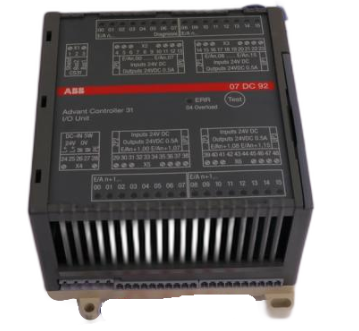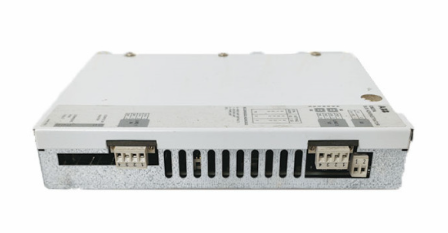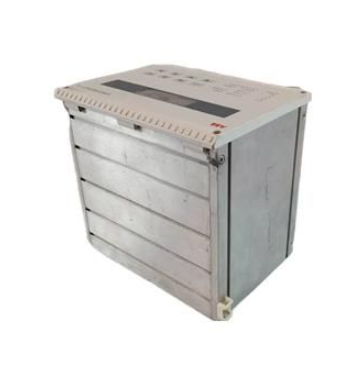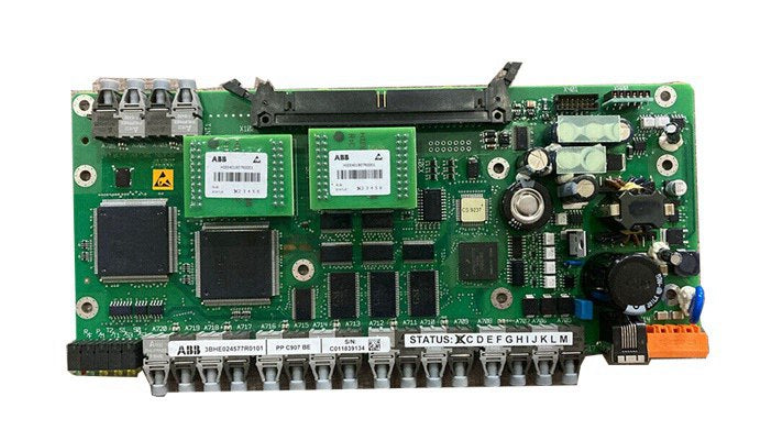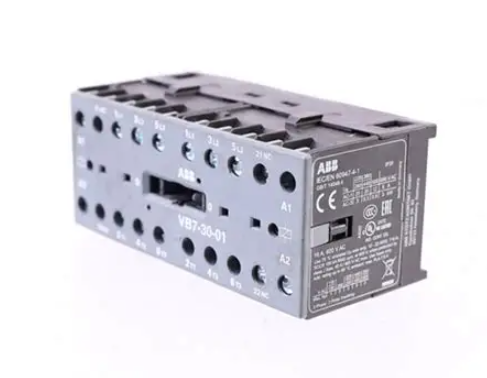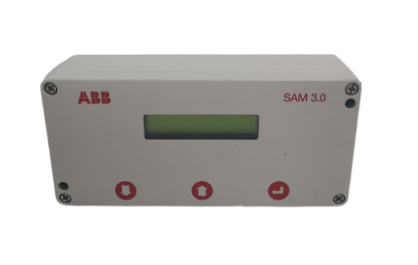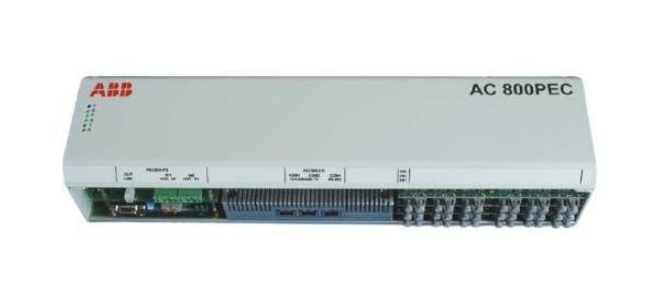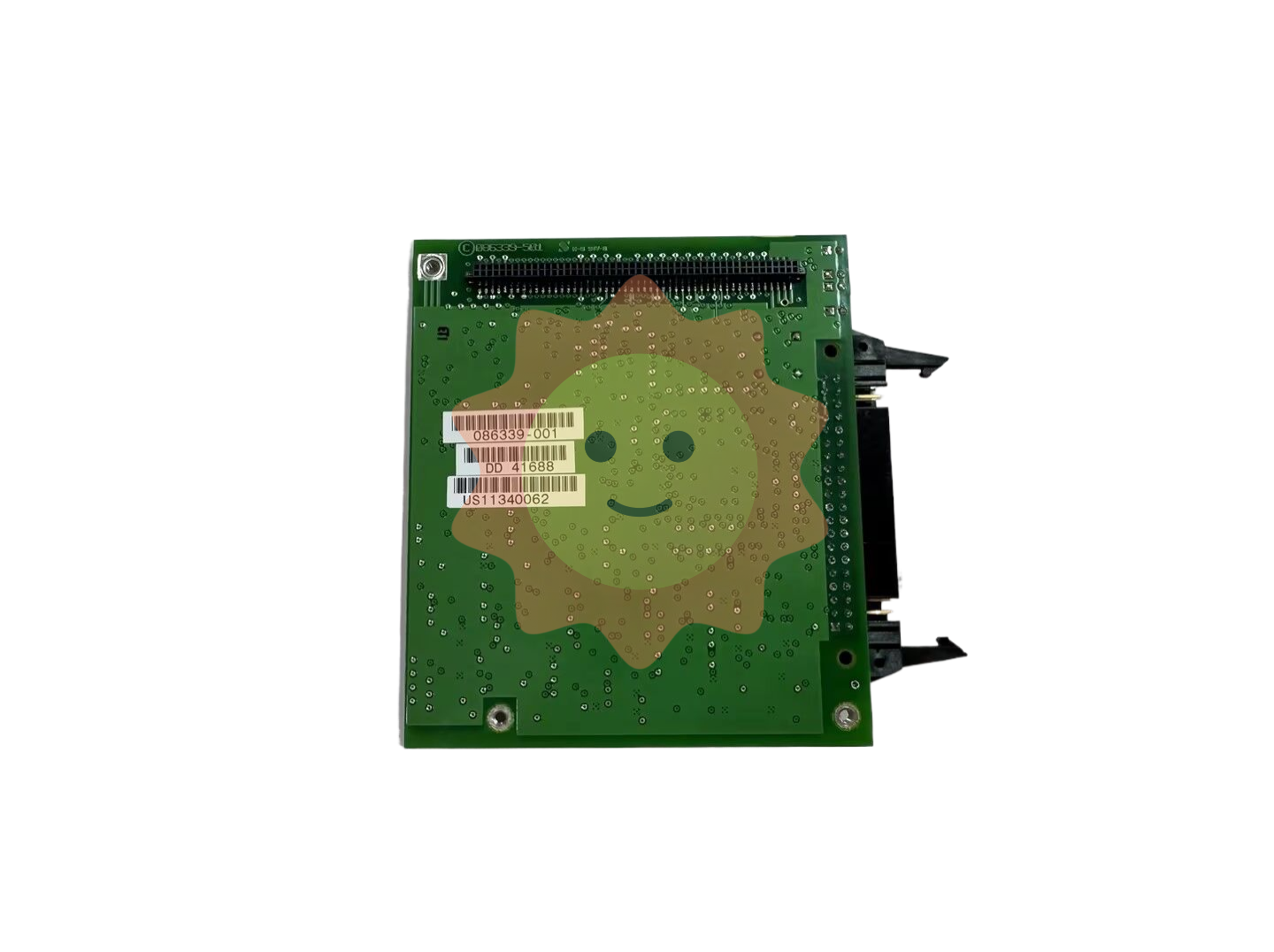ABB 3BHE03930R0101 I/O module
Brand: ABB is a globally renowned leader in power and automation technology, known for its innovative and reliable products and solutions.
It has profound technical accumulation and rich project experience in the field of industrial automation.
The 3BHE03930R0101 I/O module inherits ABB's strict control over quality and performance.
Product Category: Clearly classified as an I/O module, it undertakes crucial signal input and output functions in industrial automation systems and serves as a key bridge connecting field devices and control systems.
ABB 3BHE03930R0101 I/O module
Basic information
Model identification: 3BHE0930R0101 is a specific model assigned by ABB to this product, which accurately locates its position in the
ABB I/O module product system, facilitating user selection and technical personnel to conduct targeted product research and maintenance.
Brand: ABB is a globally renowned leader in power and automation technology, known for its innovative and reliable products and solutions.
It has profound technical accumulation and rich project experience in the field of industrial automation.
The 3BHE03930R0101 I/O module inherits ABB's strict control over quality and performance.
Product Category: Clearly classified as an I/O module, it undertakes crucial signal input and output functions in industrial automation systems and serves as
a key bridge connecting field devices and control systems.
Technical Parameter
signal type
Digital quantity: may support standard TTL or CMOS level signals, used to connect digital devices such as switches, sensors, relays, etc.
Analog: If analog input and output are supported, the possible input and output ranges include voltage signals, such as 0-10V, ± 10V, etc; Current signals, such as 4-20mA, 0-20mA, etc.
Number of channels: Common ABB I/O modules have 8 channels, 16 channels, etc. For example, digital input/output modules may have 8 or 16 digital inputs and 8 or 16 digital outputs; The analog input/output module may have 4 or 8 analog inputs and 4 or 8 analog outputs, but the specific number of channels for 3BHE0930R0101 is unknown.
Electrical characteristics
Power requirements: Typically powered by 24V DC, some modules may also support other voltage levels such as 12V, 48V, etc.
Isolation feature: It has electrical isolation function, such as isolation between channels and between input and output and power supply. The isolation voltage may range from several hundred volts to several thousand volts to enhance the stability and anti-interference ability of the system, prevent electrical interference and fault propagation between different circuits.
Communication Protocol: It may support multiple industrial communication protocols, such as Modbus RTU/TCP, Profibus DP, EtherNet/IP, PROFINET, etc., for communication and data exchange with different controllers, upper computers, or other devices, achieving system integration and remote monitoring.
Working environment conditions
Temperature range: The working temperature range of general industrial grade I/O modules is around -25 ℃ to+60 ℃ or -40 ℃ to+85 ℃ to adapt to different industrial environmental temperatures.
Humidity range: able to operate stably within a certain humidity range, such as 5% -95% without condensation.
Features and functions:
High reliability: Using high-quality materials and advanced manufacturing processes, it can work stably in harsh industrial environments, has strong anti-interference ability, ensures the accuracy and stability of data transmission, and reduces system failures and downtime.
Multiple signal types supported: It may support multiple types of input and output signals, such as digital signals (such as switch input and output), analog signals (such as voltage and current signal input and output), etc., to meet the signal interface requirements of different industrial equipment and systems.
Flexible configuration options: Allow users to flexibly configure according to specific application scenarios and control requirements, such as determining input and output points, signal ranges, communication protocols, and other parameters through software or hardware settings, making it easy to integrate into various automation control systems.
High speed data processing capability: able to quickly collect input signals and output the processed results to meet the high real-time requirements of industrial control processes, such as timely and accurate signal processing and transmission in some motion control, process control and other scenarios that require fast response.
Good compatibility and openness: Supports multiple standard communication protocols such as Profibus, Modbus, EtherNet/IP, etc., making it easy to integrate and exchange data with other brands of devices or systems, and helping to build complex industrial automation networks.
Working principle
Basic concepts and functional positioning
I/O module is the core component for signal interaction in industrial automation systems, used to connect controllers (such as PLC, DCS) with field devices (such as sensors, actuators), to achieve data acquisition and control instruction output. As a leading enterprise in the field of industrial automation, ABB's I/O module design follows the principles of high reliability, compatibility, and real-time performance, and is widely used in scenarios such as power, manufacturing, and energy.
Core working principle: The entire process of signal processing
1. Input Process
Signal acquisition:
Receive signals from on-site devices such as pressure sensors, limit switches, and temperature transmitters, which are divided into digital quantities (switch status, such as ON/OFF) and analog quantities (continuously changing values, such as 4-20mA current, 0-10V voltage).
Digital input: Isolating external circuits through optocouplers to prevent interference, converting level signals (such as 24V DC) into logic signals (0/1) recognizable by the controller.
Analog input: Continuous analog signals (such as voltage and current) are converted into digital signals (such as 12 bit or 16 bit binary numbers) through an analog-to-digital converter (ADC), and filtered and linearized to reduce the impact of noise.
Signal isolation and protection:
Adopting electrical isolation technology (such as optocouplers and transformer isolation) to avoid the impact of on-site equipment failures on the controller, while suppressing electromagnetic interference (EMI) and common mode voltage interference. For example, the isolation voltage can usually reach 500V~2500V to ensure system safety.
2. Output Process
Signal conversion and amplification:
Receive digital control instructions sent by the controller and drive field devices (such as relays, solenoid valves, and frequency converters) through digital or analog output.
Digital output: Logic signals (0/1) are converted into electrical outputs (such as 24V DC driven relays) through switching elements such as transistors, relays, or thyristors. Some modules support high-power outputs (such as 2A/channel).
Analog output: Digital instructions are converted into analog signals (such as 4-20mA current) through a digital to analog converter (DAC) to drive actuators (such as regulating valves) for continuous control.
Load protection and driving capability:
Integrate overcurrent and overvoltage protection circuits to prevent load short circuits or overload damage to modules, while optimizing driving capabilities based on load types (resistive, inductive, capacitive), such as configuring freewheeling diodes to eliminate back electromotive force for inductive loads.
3. Communication and Data Interaction
Communication with the controller:
Establish real-time connection with the controller through industrial communication protocols such as Profibus, EtherNet/IP, Modbus, and periodically exchange input data (collected field signals) and output data (controller instructions). For example:
In EtherNet/IP networks, I/O modules act as slave stations, sending input data and receiving output update instructions as requested by the master station (controller).
Some modules support the "hot plug" function, allowing for module replacement during system operation, and the communication protocol will automatically handle device status changes.
Data caching and real-time guarantee:
Built in cache memory (such as FIFO) temporarily stores input/output data to ensure that data is not lost in case of communication interruption; Using hardware timers or dedicated chips to achieve high-speed data refresh (such as 1ms response), meeting real-time control requirements.
Key technical characteristics and working mechanism
1. Modular design and scalability
ABB I/O modules typically use backplane buses (such as ABB's S800 I/O system) or distributed architectures (such as AC 800M controller I/O modules), flexibly expanding the number of channels through physical slots or network interfaces, and supporting mixed configurations (digital, analog, special function modules).
2. Diagnosis and Self Maintenance Mechanism
Status monitoring: Real time monitoring of module power, temperature, and channel faults (such as disconnection and short circuit), visually displaying the operating status through LED indicator lights (such as RUN, ERROR, channel status).
Fault handling: Some modules support the "fail safe" mode, which automatically sets the output to a safe state (such as disconnecting a relay) and sends an alarm message to the controller when an abnormality is detected.
3. Environmental adaptability design
For industrial environment optimization, it supports wide temperature range (such as -40 ℃~+70 ℃), anti vibration (such as complying with IEC 60068-2-6 standard), and moisture and dust prevention (such as IP20 protection level), ensuring stable operation under harsh working conditions.
Application scenarios
Industrial automation production line
1. Manufacturing assembly line control
Application scenarios: automotive welding lines, electronic component mounting equipment, food packaging production lines.
Function implementation:
Collecting position signals from sensors (photoelectric switches, proximity switches) through digital I/O modules to determine whether the workpiece is in place;
The analog I/O module monitors parameters such as motor current and temperature, and adjusts the operating speed in real-time;
The output channel drives actuators such as solenoid valves and cylinders to complete assembly actions, such as robotic arms grasping parts.
2. Process Control and Process Industry
Application scenarios: Temperature and pressure control of chemical reaction vessels, liquid level regulation of fermentation tanks in pharmaceutical factories, flow monitoring of petroleum refining equipment.
Technical features:
Analog I/O modules (such as 4-20mA current input/output) are connected to pressure transmitters and regulating valves to achieve PID closed-loop control;
I/O modules that support explosion-proof certification (such as ATEX, IECEx) are used in hazardous areas to prevent sparks from causing explosions.
In the field of electricity and energy
1. Substation automation system
Application scenarios: High voltage switchgear monitoring, relay protection device interface, transformer status monitoring.
Key functions:
Digital input collection of circuit breaker opening and closing status, relay protection signals;
Digital output control switch for opening and closing, in conjunction with SCADA system to achieve remote operation;
Supports IEC 61850 communication protocol and seamlessly integrates with power automation systems.
2. Renewable energy generation
Application scenarios: wind turbine pitch control, solar photovoltaic inverter monitoring, energy storage battery management system.
Technical requirements:
The high-speed I/O module processes high-frequency analog signals such as wind speed and torque, with a response time of milliseconds;
Anti electromagnetic interference design, suitable for strong electromagnetic environments such as frequency converters and transformers.
Architecture and Infrastructure
1. Intelligent Building Automation
Application scenarios: Central air conditioning system, elevator group control, security access control linkage.
Typical configuration:
Digital input connects to access control card swiping signal, triggering elevator floor permission control;
Analog output adjusts the opening of the air conditioning chilled water valve to maintain indoor temperature;
Supports BACnet and Modbus protocols, integrated with Building Management Systems (BMS).
2. Municipal engineering and environmental protection equipment
Application scenarios: Start stop control of sewage treatment plant water pumps, water quality monitoring of water plants, and pressure monitoring of urban pipeline networks.
Environmental adaptability:
Wide temperature design (-20 ℃~+60 ℃) suitable for outdoor working conditions;
Moisture proof and dust-proof structure (such as IP65 protection level), suitable for harsh environments such as sewage tanks.
Metallurgical and Heavy Industry
1. Steel rolling production line
Application scenarios: adjustment of roll gap in hot rolling mill, tension control in cold rolling mill, monitoring of material level in blast furnace.
Special requirements:
High power I/O module directly drives hydraulic servo valve (current up to several amperes);
Anti vibration design (such as through ISO 16750 vehicle vibration standard) to adapt to high-frequency vibration environments of rolling mills.
2. Mining and Material Handling
Application scenarios: Mine hoist control, belt conveyor protection, slurry concentration monitoring.
Security mechanism:
Fault safe I/O modules (such as SIL certification) automatically trigger an emergency stop when the sensor is disconnected;
Distributed I/O deployment reduces long-distance cabling interference through remote I/O stations.
Transportation and Rail Transit
1. Railway signal control
Application scenarios: railway station switch conversion, signal light control, train door linkage.
Communication characteristics:
Support MVB (Multi functional Vehicle Bus) and CANopen protocols to meet the real-time requirements of rail transit;
Redundant design (dual power supply, dual communication links) ensures driving safety.
2. Airport baggage handling system
Application scenarios: luggage sorting turntable control, security inspection equipment linkage, conveyor belt speed adjustment.
Efficiency optimization:
The high-speed counter I/O module calculates the baggage throughput and dynamically adjusts the sorting logic;
Multi channel synchronous output controls the coordinated action of multiple motors to reduce luggage congestion.

- EMERSON
- Honeywell
- CTI
- Rolls-Royce
- General Electric
- Woodward
- Yaskawa
- xYCOM
- Motorola
- Siemens
- Rockwell
- ABB
- B&R
- HIMA
- Construction site
- electricity
- Automobile market
- PLC
- DCS
- Motor drivers
- VSD
- Implications
- cement
- CO2
- CEM
- methane
- Artificial intelligence
- Titanic
- Solar energy
- Hydrogen fuel cell
- Hydrogen and fuel cells
- Hydrogen and oxygen fuel cells
- tyre
- Chemical fiber
- dynamo
- corpuscle
- Pulp and paper
- printing
- fossil
- FANUC
- Food and beverage
- Life science
- Sewage treatment
- Personal care
- electricity
- boats
- infrastructure
- Automobile industry
- metallurgy
- Nuclear power generation
- Geothermal power generation
- Water and wastewater
- Infrastructure construction
- Mine hazard
- steel
- papermaking
- Natural gas industry
- Infrastructure construction
- Power and energy
- Rubber and plastic
- Renewable energy
- pharmacy
- mining
- Plastic industry
- Schneider
- Kongsberg
- NI
- Wind energy
- International petroleum
- International new energy network
- gas
- WATLOW
- ProSoft
- SEW
- wind
- ADVANCED
- Reliance
- YOKOGAWA
- TRICONEX
- FOXBORO
- METSO
- MAN
- Advantest
- ADVANCED
- ALSTOM
- Control Wave
- AB
- AMAT
- STUDER
- KONGSBERG
- MOTOROLA
- DANAHER MOTION
- Bently
- Galil
- EATON
- MOLEX
- Triconex
- DEIF
- B&W
- ZYGO
- Aerotech
- DANFOSS
- KOLLMORGEN
- Beijer
- Endress+Hauser
- MOOG
- KB
- Moxa
- Rexroth


Email:wang@kongjiangauto.com



